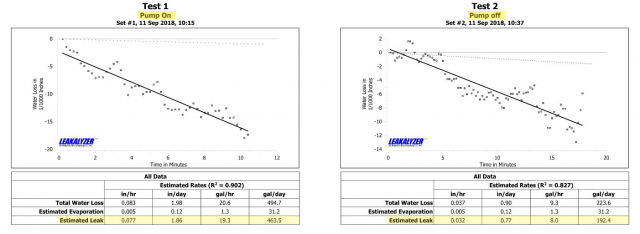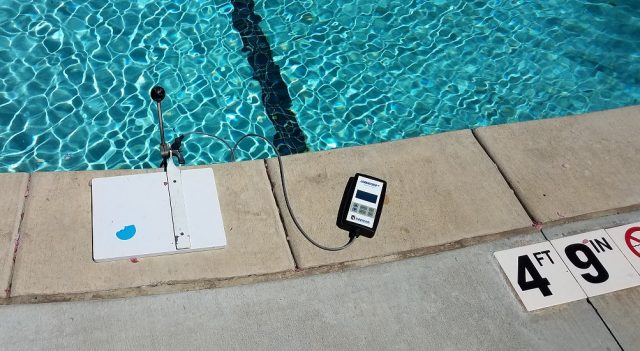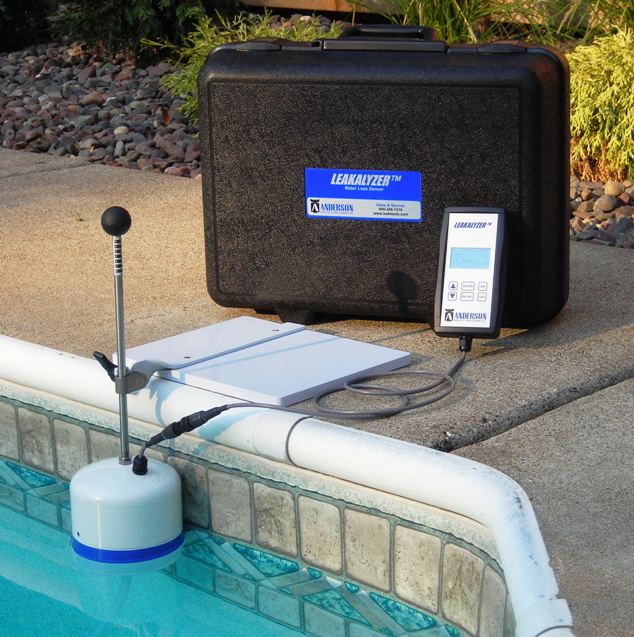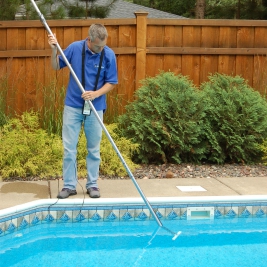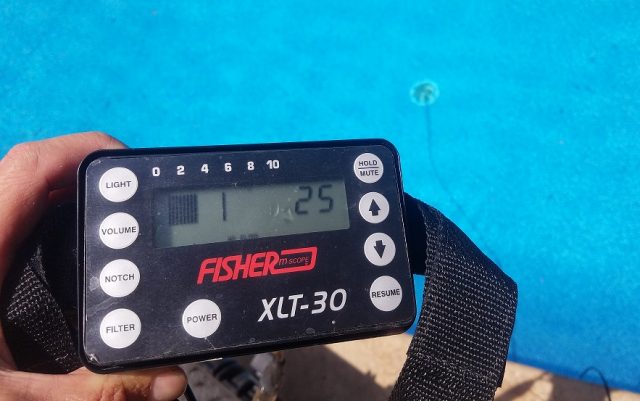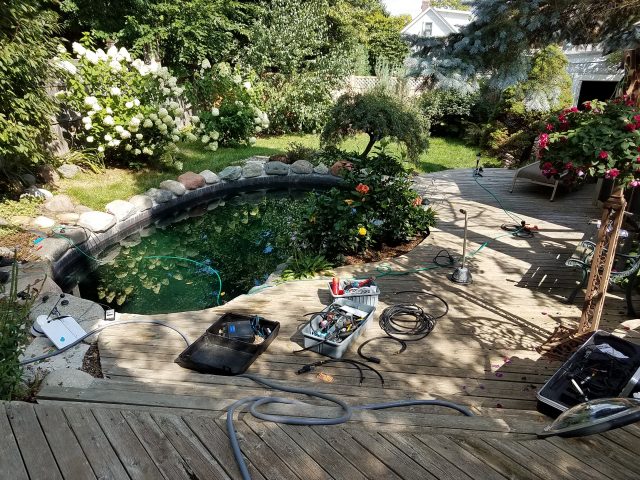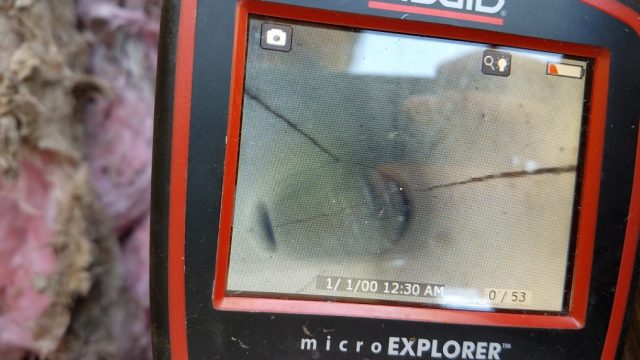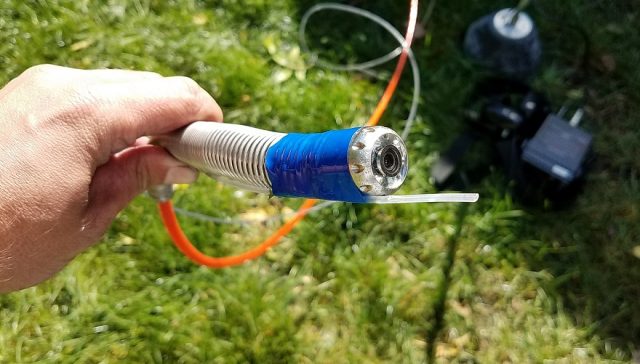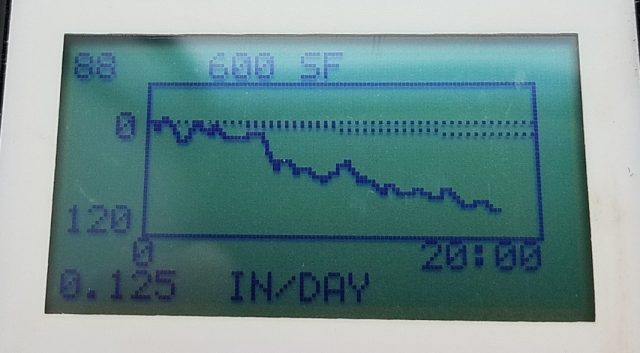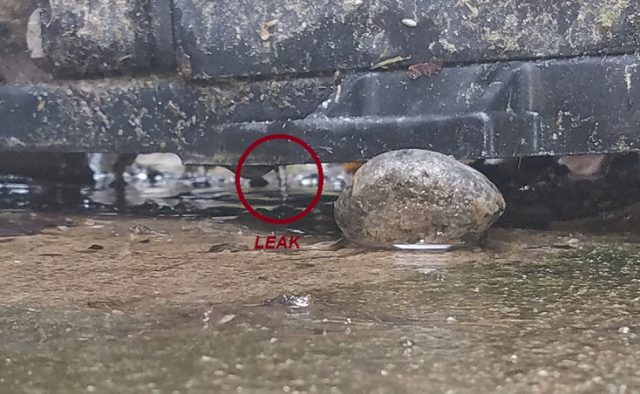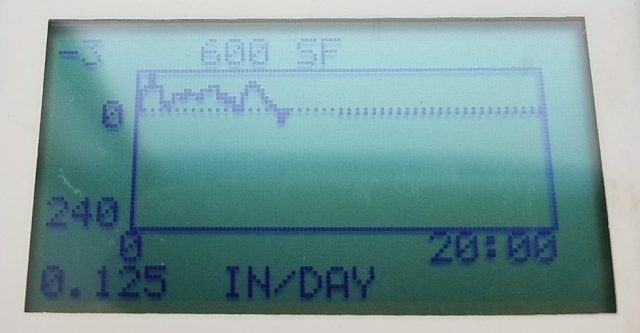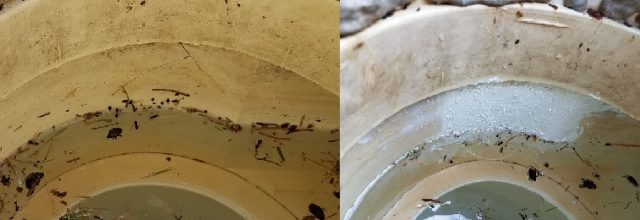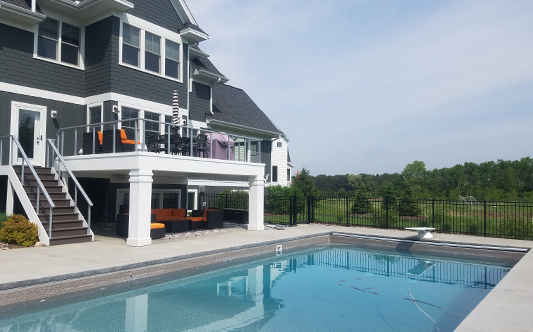Type of Pool:
Vinyl Liner
Equipment Used:
Leakalyzer, LeakTrac, Dye Tester Cones, Pressure Testing Equipment, Electronic Listening Device, Hydrophone, Tube Level
Situation:
We were called to examine a new build that was losing 4” of water per day. It hadn’t been leaking for the first four days that it was filled but recently started rapidly losing water. When we arrived to the pool the water level was down below the skimmers, but the skimmer bowls were still full of water – indicating that those lines were not leaking.
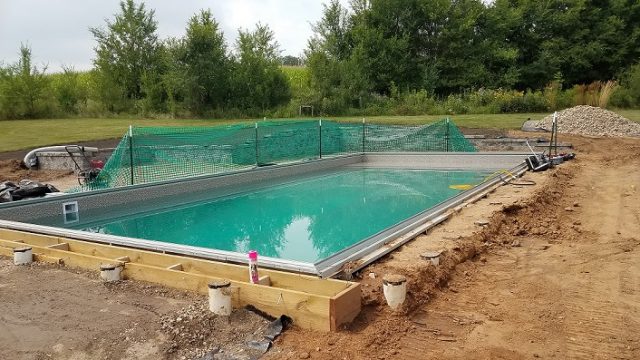
Solution:
Suspecting that the problem was in a plumbing line, we did a quick dye test of the returns and cleaner line with the dye testing cones, but they also were not drawing water. Our Leakalyzer test had been running during these initial observations, and indicated a loss of 3.5 inches per day. A quick scan with the LeakTrac showed no leaks in the liner, so it was time to dive down to the main drain. A dye test with the dye testing cones showed that line was the source of our water loss.
We then plugged the main drain lines while we were diving and ran a pressure test from the equipment back to the pool. The water pressure test confirmed the line was leaking, so we then started inducing air for sonic location. It took a while for the air to reach the leak, indicating that the leak wasn’t close to the equipment where the air was being induced. So, we used a hydrophone attached to our XLT30H listening device to start listening along the main drain lines where they ran close to the shell of the pool. We could hear the loud bubbling/gurgling noise of air escaping into water saturated soil near the base of the wall in the middle of the deep end.
Since the main drains were plugged we ran another Leakalyzer test to verify that the rest of the pool shell was not losing water and the main drain line was the only issue.
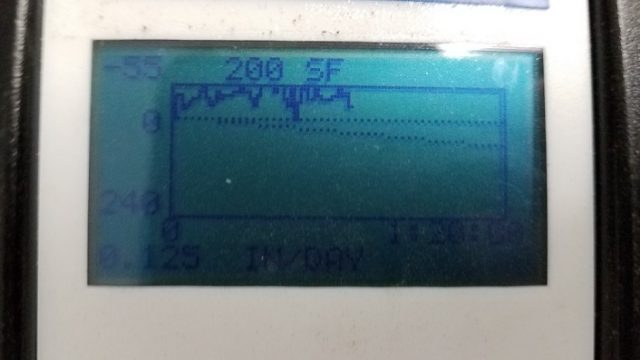
A main drain leak at the base of the wall is not a repair anyone wants to make, so to verify the sonic leak location we used a tube level. We attached a clear plastic tube to the end of a standard open plug in the main drain. Now, instead the leak draining water from the pool it drained the water in the tube. The tube leaked down to the level of the leak and then stopped. We colored the water in the tube with Leakmaster Fluorescent Dye to be able to clearly see the water level. The water level stopped right at the level that we had identified with the hydrophone.
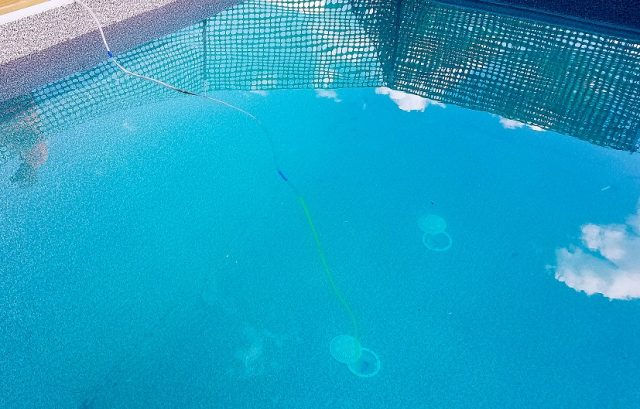
The crew dug up the leaking plumbing line and found a stake had been driven through the pipe!?!
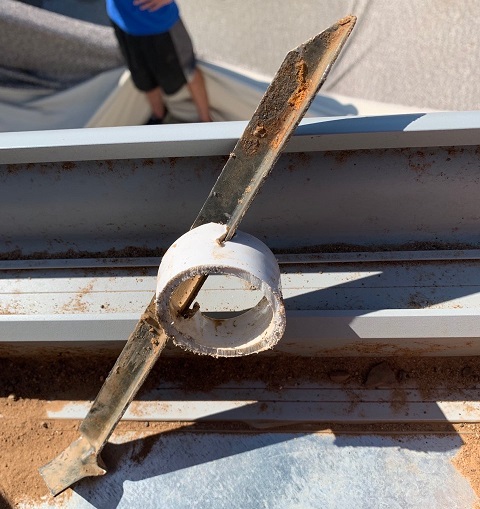
Highlights:
- A hydrophone with digital sound graph is helpful when listening for main drain plumbing leaks through the shell of the pool.
- The Leakalyzer helps verify the rest of pool isn’t leaking while pressure testing and pinpointing leaks in plumbing.
- A simple tube level can help verify the depth of the leak before digging. Be creative with the materials you have on hand!

